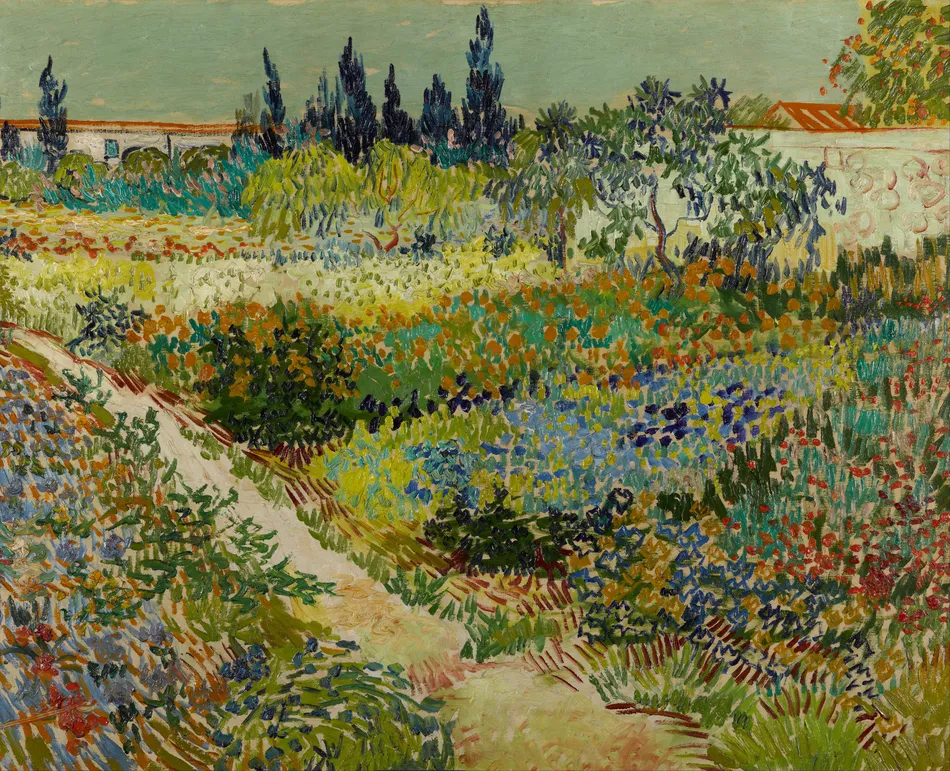



About the Artist
Master’s Palette
Reveal the unique color story behind each piece, helping you delve into the artistic essence, and spark boundless inspiration and imagination.

Bring the captivating colors to your project. Click to copy!
Artwork Story
Vincent van Gogh’s ‘Garden at Arles’ bursts with the vibrant energy of the French countryside, where swirling brushstrokes and bold colors bring the scene to life. The painting captures a lush garden, its pathways winding through dense foliage, while flowers explode in fiery reds and yellows against deep greens. Van Gogh’s signature impasto technique adds texture, making the leaves and petals almost leap off the canvas. There’s a restless rhythm here—the way the plants twist and stretch under the sun feels alive, as if the garden itself is breathing. Painted during his time in Arles, this work reflects his fascination with nature’s raw beauty and his relentless pursuit of capturing light in motion.
What makes this piece particularly mesmerizing is how van Gogh transforms an ordinary garden into something almost mystical. The thickly layered paint creates a sense of depth, pulling the viewer into the scene, while the contrasting hues—cool shadows against warm highlights—heighten the drama. You can almost feel the Provençal sun beating down, hear the rustle of leaves. It’s not just a depiction of a place but an emotional experience, charged with the artist’s own intensity. This was a period of both turmoil and creativity for van Gogh, and the painting vibrates with that duality—serene yet restless, controlled yet wildly expressive.


 (c. 1380-1390)-full.webp)
-full.webp)
-full.webp)
-full.webp)
-full.webp)
-full.webp)